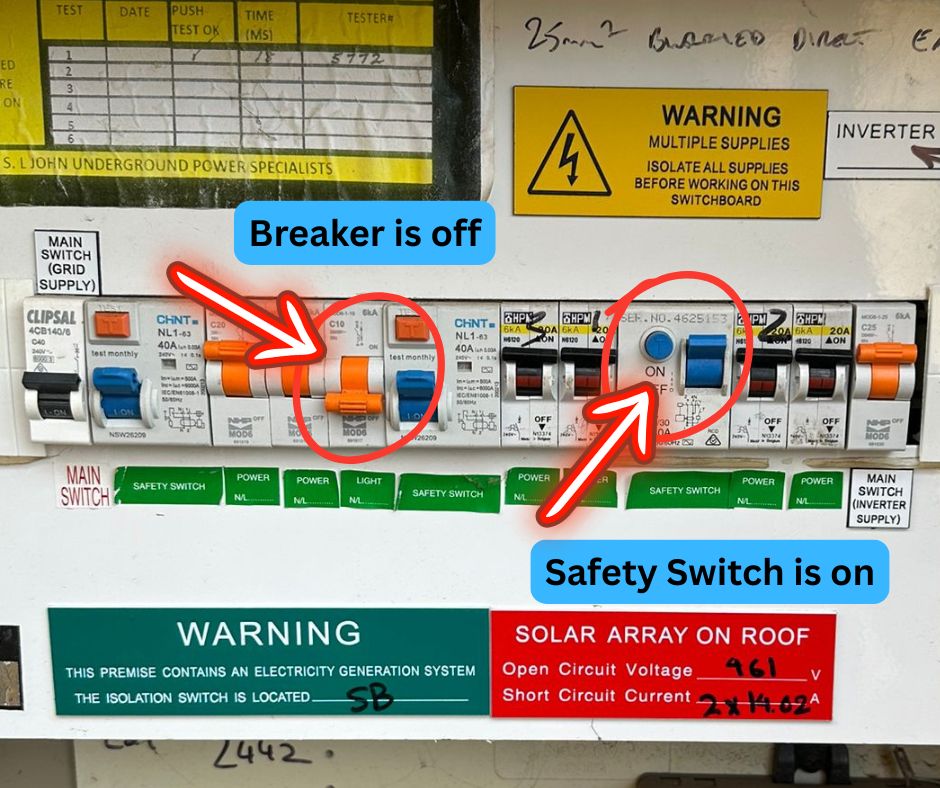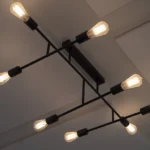Identifying Critical Warning Signs That Indicate Your Switchboard Needs an Upgrade
Frequent incidences of tripped circuit breakers, flickering lights, the presence of burning odours, outdated fuses, and an absence of safety switches are significant indicators that your switchboard may be unsafe or not compliant with Australian Standards (AS/NZS 3000). These alarming issues can lead to serious risks such as electric shock, damage to appliances, or even fire hazards. It is imperative to have a licensed electrician assess your electrical system immediately to ensure your safety and compliance.
Understanding the Importance of Switchboards in Your Home
Your home’s switchboard plays a vital role as the heart of your electrical system. If it is outdated or exhibiting signs of malfunction, it could pose significant risks to your safety and well-being. Many older homes, particularly in areas of Melbourne’s outer southeast, still rely on electrical systems that were installed decades ago, well before modern electrical safety standards were established. Upgrading your switchboard is not merely a matter of good maintenance; it is essential for ensuring your home adheres to current regulations and minimizes potential safety hazards.
In this discussion, we will delve into the top warning signs that suggest your switchboard may need replacing, highlighting the importance of compliance and the risks associated with neglecting these indicators.
1. Frequent Trips of Circuit Breakers Indicate Overload Issues
If your circuit breakers trip frequently, especially when multiple appliances are in use simultaneously, this could be a clear indication that your switchboard is overloaded. Such trips can signal poor load distribution, inadequate cabling, or aging breakers that no longer perform safely. Regularly tripping breakers not only disrupts your daily activities but can also lead to more severe electrical issues if left unaddressed. To learn more about how to improve your electrical system's reliability, explore our Electrical Panel Upgrade Services.
2. Flickering or Dimming Lights Point to Voltage Instability
When you observe your lights flickering or dimming while appliances are starting up, it often indicates voltage instability. This issue is typically caused by loose or degraded connections within the switchboard or a system that struggles to manage load surges effectively. Such fluctuations can lead to further complications, including damage to sensitive electronic devices. Addressing this problem promptly is essential to maintain a stable and safe electrical environment in your home.
3. The Presence of Burning Smells or Heat Marks Signals Danger
Detecting a burning smell near your switchboard or observing visible signs of charring, discolouration, or melted plastic is a serious red flag. These indicators are typically associated with overheating or arcing occurring inside the switchboard, both of which significantly increase the risk of fire. If you notice any of these alarming signs, immediate action is necessary to protect your home and family from potential hazards. For official guidance related to electrical fire hazards, visit the Victorian Building Authority.
4. Outdated Ceramic Fuses Signal the Need for Modern Safety Solutions
The presence of ceramic fuses in your switchboard, particularly those installed prior to the 1990s, can indicate that your electrical system is outdated. Unlike modern circuit breakers, ceramic fuses do not provide fast-response safety capabilities and lack adequate protection against electric shock. Current wiring standards, specifically AS/NZS 3000:2018, mandate that all final sub-circuits must have safety switch (RCD) protection. If your switchboard still contains ceramic fuses, it is not only outdated but also poses potential dangers that should be addressed without delay.
5. Warm or Hot Switchboard Panels Indicate Potential Overload
Your switchboard should ideally remain at room temperature during operation. If you find that the surface is warm or hot to the touch, this typically signifies poor internal connections or overloaded circuits. Prolonged exposure to excessive heat can lead to degradation of insulation or even cause permanent damage to the internal wiring. It is crucial to investigate and rectify this issue to prevent further complications and ensure the safety of your home’s electrical system.
6. Outdated Switchboards Struggle to Support Modern Appliances
With the increasing usage of high-demand electrical devices in today’s homes, such as larger air conditioning systems, induction cooktops, electric vehicles, and extensive work-from-home setups, older switchboards are often ill-equipped to handle these loads safely. Many older switchboards were not designed with these modern demands in mind, making them susceptible to dangerous overload situations. Upgrading to a contemporary switchboard is essential to ensure that your home’s electrical system can safely support all your needs.

7. Absence of Safety Switches (RCDs) Represents a Major Compliance Issue
If your switchboard lacks safety switches (RCDs), your property does not meet essential modern protection standards. RCDs are now mandatory for all new installations and electrical work as stipulated in AS/NZS 3000. Additionally, recent changes to rental property laws enforced by Energy Safe Victoria since March 29, 2023, require that all rental homes in Victoria be equipped with compliant circuit breakers and RCDs. It is vital to review and adhere to these updated standards to ensure the safety of your property and its occupants.
8. Risk of Asbestos Exposure in Older Switchboards
Older switchboards, particularly those installed before 1985, may contain asbestos in their backing panels or internal components. This poses significant health risks, as asbestos exposure can lead to serious respiratory issues and other health complications. The legal removal of asbestos can only be performed by licensed asbestos contractors. It is recommended to book a qualified electrician for a comprehensive Home Electrical Inspection before attempting any alterations or removals of older switchboard housings.
9. Unusual Sounds from Your Switchboard Indicate Serious Issues
If you hear unusual sounds such as buzzing, popping, or cracking coming from your switchboard, or if you notice breakers with scorch marks or melted plastic, these are clear signs of internal arcing or overload. Such issues require immediate attention to prevent the risk of fire or damage to appliances. Prompt action is essential to ensure the safety and functionality of your electrical system.
10. Legal and Insurance Implications of Non-Compliant Switchboards
An outdated or non-compliant switchboard can jeopardise your insurance coverage in the event of an electrical fire. Compliance with Australian Standards is enforced by both federal and state authorities. Any property undergoing renovation, appliance upgrades, or changes in tenancy must align with the latest safety requirements to avoid legal repercussions and ensure the safety of all occupants.
Why Choose Direct Point Electrical for Your Switchboard Upgrade?
Located in outer east Melbourne, Direct Point Electrical specializes in switchboard upgrades that ensure compliance with current standards while enhancing the overall safety of your home. Our team of expert electricians focuses on upgrading legacy homes, guaranteeing adherence to:
- AS/NZS 3000:2018 Wiring Rules
- Energy Safe Victoria requirements
- All local DNSP and safety notice obligations
- Certification via Certificate of Electrical Safety (COES)
Our comprehensive Switchboard Upgrade Services include assessment, safe removal of asbestos, installation of RCDs, and optional surge protection to enhance the safety and functionality of your home’s electrical system.
Frequently Asked Questions About Switchboard Upgrades
Q: How often should I have my switchboard inspected?
A: It is advisable to have your switchboard inspected every five years or whenever you add significant electrical loads to your home to ensure ongoing safety and compliance.
Q: Can I upgrade my switchboard myself?
A: No, switchboard upgrades must be conducted by a licensed electrician to guarantee safety and compliance with current regulations.
Q: How long does a switchboard upgrade take?
A: Most upgrades can be completed within a single day, minimizing disruption to your household activities and ensuring safety promptly.
Q: Will an upgraded switchboard increase my home’s value?
A: Yes, an upgraded electrical system is appealing to potential buyers and can significantly enhance your property’s value in the real estate market.


Isn’t it funny how we often ignore those little (or not-so-little) warning signs until something dramatic happens? I remember the “thrilling” moment when my lights flickered as if they were trying to give me a performance of “The Phantom of the Switchboard.” Talk about an unscheduled thriller night!
It’s so true how we often overlook those warning signs until the universe decides to make a grand announcement. I think your “Phantom of the Switchboard” performance really captures that sense of irony we often face. It reminds me of how we sometimes ignore little health cues our bodies give us, only to be jolted into action when something bigger happens.
The points you’ve raised about the signs that indicate a need for switchboard upgrading resonate deeply. It’s startling to think about how many homes are still relying on outdated electrical systems, especially in regions with a rich history like Melbourne’s outer southeast. I can’t help but recall a couple of friends who’ve faced similar issues—one experienced intermittent power outages due to an old switchboard, and the other had to deal with flickering lights that turned out to be a symptom of larger, more serious problems.
You’ve raised some essential points about the importance of maintaining a functional switchboard, and it’s alarming how often these signs are overlooked in older homes. I can relate to the concern; my family once experienced a power outage caused by an outdated switchboard that had failed to handle our growing electrical needs. It was a stressful time, especially with small children in the house.
I really appreciate how you’ve highlighted the often-overlooked importance of switchboards in ensuring our safety. It’s fascinating how many people might not realize that these seemingly mundane components are fundamental to our home’s electrical system. I remember when my parents finally upgraded the switchboard in their house after years of flickering lights and an ever-hungry ghost in the fridge that they swore could not be normal power issues. The peace of mind that came with having a proper, modern switchboard was incredible.
This is such a crucial topic for anyone living in an older home, especially in regions like Melbourne’s outer southeast where many of us are unaware of the hidden dangers lurking behind our walls. I’ve had my own experiences with an outdated switchboard that served as a constant reminder of how vital electrical safety really is. After noticing flickering lights and the occasional burnt aroma, I finally had an electrician come in for an assessment. It was eye-opening to realize how much technology has evolved and how our safety standards have improved over the years.
This topic resonates with me so much! A friend of mine recently experienced a severe electrical issue due to an outdated switchboard, which sadly resulted in some appliances being damaged—and it got me thinking about how many people overlook this essential part of their home. It’s amazing how many of us often prioritize things like decor or furniture upgrades while neglecting the infrastructure that keeps our homes safe and functioning.
This is such an important topic, and I truly appreciate the clarity with which you’ve outlined the critical signs for evaluating switchboards. I recently had a close call with an electrical issue in my own home, which made me acutely aware of just how vital our switchboards are. Living in an older home that still has some of its original electrical wiring, I’ve come to realize how frequently these silent threats can emerge and the importance of staying proactive.
The concerns raised in your post resonate with many homeowners, especially in older suburbs where the electrical infrastructure has not kept pace with modern safety standards and technological advancements. As someone who recently went through the process of upgrading our home’s switchboard, I can certainly attest to how crucial this decision is for ensuring both safety and functionality.
You’ve highlighted some critical issues that many homeowners might overlook, and it’s fascinating how a switchboard can impact not just safety but also overall health and comfort in our living spaces. I remember my own experience when we noticed flickering lights in our home; it turned into a longer conversation about the age of our entire electrical system. It’s quite alarming to think that so many older homes still operate on outdated systems!
This post brings to light some critical aspects of electrical safety that often get overlooked, especially in older homes where outdated switchboard systems can lead to serious hazards. Having lived in a home built in the late 1970s, I’ve experienced firsthand the unease that comes with flickering lights and the occasional tripped circuit breaker. At times, it felt like a minor inconvenience, but upon reading your post, I realize that these issues may be indicative of much more serious underlying problems.